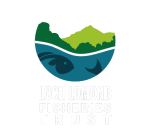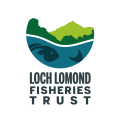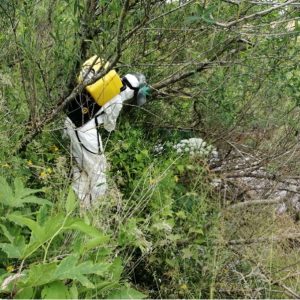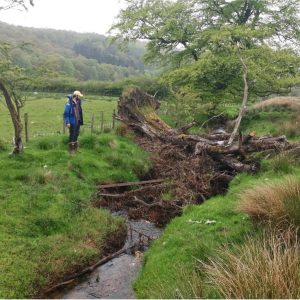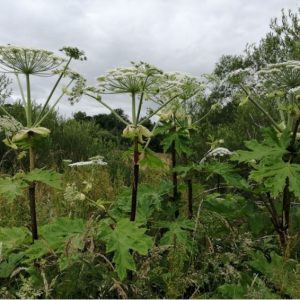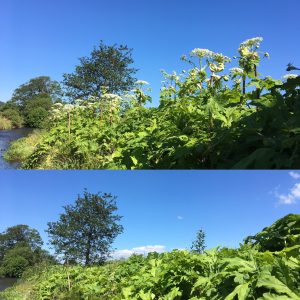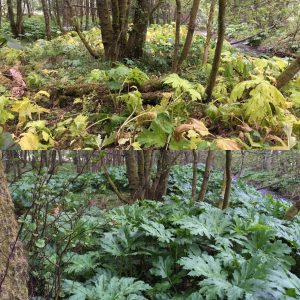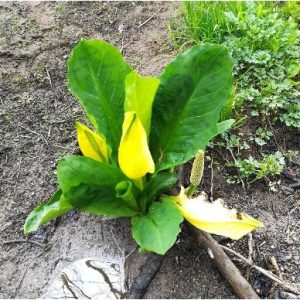wild blane water project
The Blane Water habitat is far from healthy yet supports Atlantic salmon and river lamprey. Various historical and on-going issues arising from poor land management, pollution events, the dominance of invasive plant species, straightening of watercourses and in some areas the removal of natural bankside tree cover has led to a decrease in suitable water conditions and availability of good habitat to support a healthy ecosystem.
The Wild Blane Project was designed to reverse the damage improving the structure of riverbanks and the associated riparian corridors. This was achieved by tackling Invasive Non-Native species (INNS) and increasing local biodiversity through native tree planting, management of stock grazing, restoration of eroded riverbanks and re-establishing hedgerows.
We were excited to use the Wild Blane Water Project as a vehicle to promote skills development and deliver training with the aim of helping individuals gain future employment. Members of the local community, our interns and young people from Tullochan, a local youth and employability charity, were able to gain practical experience in the fields of sustainable land management, habitat restoration and INNS eradication through this project.
Controlling invasive non-native plant species on the Blane Water was incredibly challenging in 2021 as climatical conditions and weather patterns delayed the growth of giant hogweed. This was recognised throughout the Loch Lomond catchment in comparison to other locations in the country. Giant hogweed treatment was delayed due to the lack of plant foliage and the plant was not feasibly treatable until June. This was when all vegetation began to grow resulting in giant hogweed maturing quickly to outcompete other vegetation. This increased the difficulty to access plants and reduced the timescale to treat all known areas.
Giant hogweed stand densities were reduced on the previous year, suggesting effective treatment in 2020, highlighted by the number of staff days used to treat the plant being considerably less (33 staff days in 2021 compared to 55 staff days in 2020). Keeping on top of invasive plant species, such as giant hogweed, was particularly important for the progression of the Wild Blane Project. Although natural regeneration of grasses is widespread at high density treatment sites – stock grazing, cattle poaching, and deer have limited the amount of tree regeneration, which can be a contributing factor to bank erosion. The next step was to reinstate fencing and plant native trees to create a riparian corridor, and increase connectivity of woodlands via hedgerows.
A strategic brash banking and willow spiling plan was set out within the Blane Water. Specifically, the Blane water was targeted between Dumgoyne and Quinloch to combat the negative effects of intensive cattle poaching and sheep grazing. This was undertaken in conjunction with invasive non-native species treatment and other environmental improvements as part of a greater river restoration initiative. The goal was to remove invasive species that dominated backsides and promote native tree cover. These actions will have numerous socio economic and ecological impacts, such as improved water quality and flood alleviation. This will in turn build a resilience to the impact of climate change.
Environmental conditions have favoured the growth of Japanese knotweed which has significantly spread throughout the catchment. Most concerning is the increasing range of giant knotweed, which can hybridise with Japanese knotweed, and this hybrid has been recognised throughout the catchment. Flood events before and during knotweed treatment in 2020 resulted in significant bank erosion on the Blane Water. It appeared as though this had contributed to the spread of knotweed species downstream of the Blane Water and into the Endrick Water. The focus for treatment in 2021 was on the upper limits, documenting locations where the plant had spread and starting treatment before stand densities increased.
Public engagement has encouraged public awareness about the impact of American skunk cabbage in the catchment. One success story was identifying a source of the plant in a small tributary burn at the top of the Blane Water. Approximately 40 mature plants were removed or treated by herbicide. It is believed that these plants spread downstream resulting in the presence of the plant throughout the catchment, identified and treated in 2020. With long-term treatment and monitoring we hope to eventually eliminate this invasive plant from the catchment.
Multiple burn blockages were present on the Allochrigh Burn, a small tributary of the Blane Water. Large old tree stumps and other debris had created a blockage preventing migratory fish access. It is important to maximise available habitat and increase the potential for spawning. As such, only certain pieces of woody debris were removed to allow a channel through the water, other pieces of woody debris have a positive effect on aquatic ecosystems, providing valuable habitat and cover from predators. Therefore, it was important to assess which objects causing the blockage should be removed and which pieces should stay in the water.
